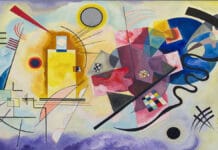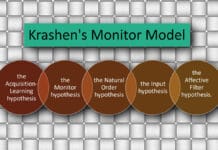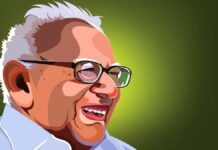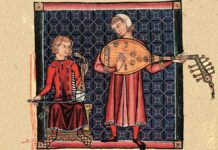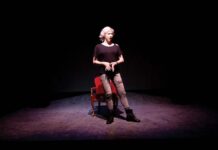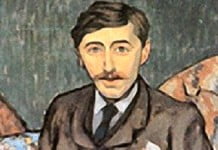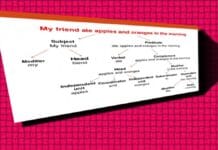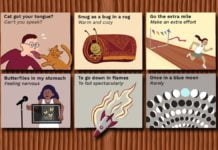A language can be used in two ways for communication. It can be spoken or written. In most fields of study, language is thought of principally in terms of the written word, for it is in this form that permanent records of important ideas are made. In linguistics, which is the systematic study of language, however, speech, rather than writing is regarded as more central to human language. This is because the speech comes first in the history of any language community- it came centuries before writing in the history of any language community.
Humans have probably used spoken languages for 100,000 years, perhaps longer. Writing is a relatively recent development, only a few thousand years old. Even today, most of the world’s 5,000 or so languages have no established writing system. But no society communicates just by writing, without a spoken language. Secondly, speech comes first in the history of any individual. Children learn to speak long before they learn to read and write; indeed, learning of spoken language takes place without formal instruction. Thirdly, speech as a medium of communication is used much more than the medium of writing. Fourthly, written language is only an attempt to represent, using marks on paper, the sound used in spoken language. Lastly, modern technology has contributed tremendously to the importance of speech – modern inventions like the telephone, the radio, the tape recorder and several such devices have raised problems of communication primarily concerned with speech.
Phonetics and phonology (both from the Greek root phon- ‘sound’), are the two subfields of linguistics concerned with speech sounds. Phonetics is a branch of linguistics and it is a branch dealing with the medium of speech. Traditionally, it deals with measurable, physical properties of speech sounds themselves, i.e. precisely how the mouth produces certain sounds, and the characteristics of the resulting soundwaves; while phonology investigates the mental system for representing and processing speech sounds within particular languages. The processes of speech production and recognition involve a range of surprisingly intricate mental abilities – part of the knowledge we have of the language(s) we speak. The words that we wish to express seem to emerge inexplicably from our mouths, as soundwaves. These sound waves then hit the hearer’s ear, sending auditory signals to the brain, which are interpreted again, seemingly magic –as the words intended by the speaker.
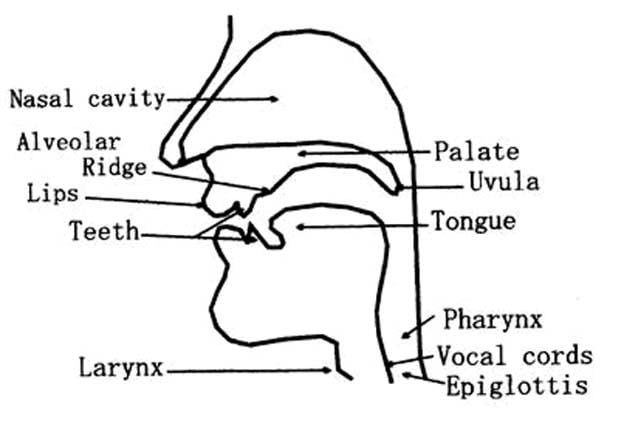
Lung air is the raw material for speech production. The lung air is modified in different ways to produce the various speech sounds which are called airstream mechanisms. The air that flows out of the mouth is modified into speech sounds by the action of certain organs of the body which are referred to as organs of speech. An airstream can also be called a moving current of air. The act of respiration involves two processes -taking outer air into the lungs, called inspiration and throwing out air from the lungs into the outer atmosphere, called expiration. It is the expiratory lung air that is the air that we breathe out, that is the basis for the articulation of most speech sounds. For this reason, the airstream involving lung air is called a pulmonic airstream.
An airstream is produced by an airstream mechanism. There are three main airstream mechanisms. These are called pulmonic, glottalic and velaric airstream mechanisms. The pulmonic airstream mechanism consists of the lungs and the respiratory muscles. When the airstream mechanism is used to push air out, it is called egressive and when it is used to draw air in, it is called ingressive. Most speech sounds make use of a pulmonic egressive airstream mechanism. All the sounds of English are produced with this airstream mechanism. It is possible to speak using the pulmonic ingressive airstream mechanism, but no language uses this airstream mechanism for the production of speech sounds. We use this airstream mechanism for yawning and snoring, but not for speaking.
In the glottalic airstream, the closed glottis acts as the initiator and the air in the pharynx is used and for that reason, some linguists refer to this airstream mechanism as pharyngeal. Both egressive and ingressive glottalic airstream mechanisms are used by some languages of the world for the articulation of speech sounds. The third airstream mechanism is commonly referred to as the velaric airstream mechanism. The back of the tongue is the initiator and the air in the mouth is set in motion during this airstream mechanism. For this reason, this is referred to as the oral airstream mechanism.
The lung air is modified by various organs to convert it into speech sounds before it gets into the outer atmosphere. These organs, in phonetic literature, are called the Organs of speech. These organs have their primary functions. The lungs are necessary for breathing, the vocal cords prevent food and drink from entering the windpipe, the tongue differentiates taste, the teeth are used for chewing food and so on. Production of speech is a secondary function of these organs. Various organs work together to convert the lung air into speech sounds.

The organs of speech belong to three systems
-the respiratory system comprises the lungs, the muscles of the chest and the windpipe
-the phonatory system comprises the larynx
-the articulatory system comprises the nose, the teeth, the tongue, the roof of the mouth and the lips
The organs of speech are otherwise called articulators. The tongue and the lower lip are active articulators because they can move towards the other articulators which are called passive articulators. The passive articulators are so-called because they remain in their positions during the articulation of speech sounds.



